I recently had the good fortune to be invited to teach fiber art in southern France, and I was also able to enjoy a few days of seeing the countryside and other perks. The last day we were in that region, we did a woad-dyeing class, which was so much fun! Woad is a plant that is native to the area surrounding Toulouse, and it dyes textiles a beautiful shade of blue. The color has a rich history in France; it was feared by many in ancient times, and the dyers were even feared as "sorcerers"! Actually this doesn't really surprise me - if you ever woad-dye and watch the fabric emerge from the dye-pot as yellow and then transform into green and then blue, you would think this must be magic, too! The color transformation is reminiscent of indigo dyeing, but the blue is softer and a bit lighter in hue. Textiles can be dyed several times to darken the color, so there are many shades of blue that can be achieved.
We learned so much about the rich history of woad-dyeing; one thing was that in the beginning, people started out dyeing mainly silk and wool before adding cottons and linens to the mix. All the students in our class brought things to dye, and we also picked up some antique linens,
shirts and garments while shopping in the villages of southern France. I
brought a little assortment of various textiles including linens,
cottons, silk, wool, laces, and even some pearl cotton! I also wet-felted a couple of wool beads
from some sheep's wool I found at a market there. The night before our
dyeing class, we soaked all our things to be dyed in vats of plain cold
water.
This is what the woad ball looks like after the leaves are dried. Then they use the dehydrated plant to mix the dye.
We did our dyeing in the area behind the "barn" at the renovated hunting lodge where we stayed, a beautiful venue, and the weather was perfect! A bit breezy, which helped to dry our woad-dyed goodies after we hung them up on this clothesline that was stretched out between the trees.
We had several vats of dye: one dark (front), one light (back), and one small for special pieces like the laces, thread, and wool. We used 36" dowel rods to bring the textiles up out of the dye-bath - no stirring! Woad works by bacteria, and you couldn't disturb the balance.
Here I am refraining from stirring!
Miriam, one of our instructors, helping me to pull my linens out of the dye-bath.
When you first pull the fabric out, it's yellow! As soon as the oxygen hits it, it immediately starts to turn green...
Here's the fabric as it's changing from green to blue.
We hung everything up to dry and finish changing to blue. Once the fabric is all blue, it can be dipped again to deepen the color if desired.
When we ran out of room, we spread our things out on the sunny field to dry!
Here's a close-up of some of my dyed laces I found at a market nearby.
My laces spread out to dry!
Miriam with her adorable puppy, who thought it great fun to play with our drying dyed things! She was so cute.
Your hands turn blue too! Guess who had the bluest hands lol?
My finished dried things: linens, cottons, laces, and my wool beads at left, even they dyed beautifully! I'll be making earrings out of those.
And this was so interesting: my woolfelt assortment. At far left is National Nonwovens' Xoticfelt, a 50/50 mix of bamboo and rayon, it took the dye beautifully! At far right is their 80/20 rayon/wool mix, which also took the dye well. What didn't dye as well was the 100% woolfelt in the middle; so I guess the rayon was the fiber that really soaked up that color. Across the top is a piece of vintage lace I found at market. I'll be making a special project using these beautiful blue textiles, so stay tuned!
Subscribe to:
Post Comments (Atom)

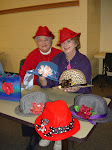
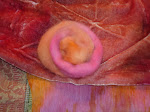
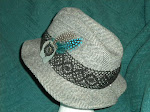

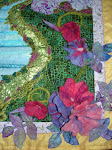
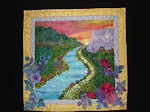

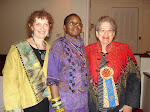
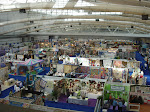




















1 comment:
Vickie, beautiful pictures! I love the whole article!
Post a Comment